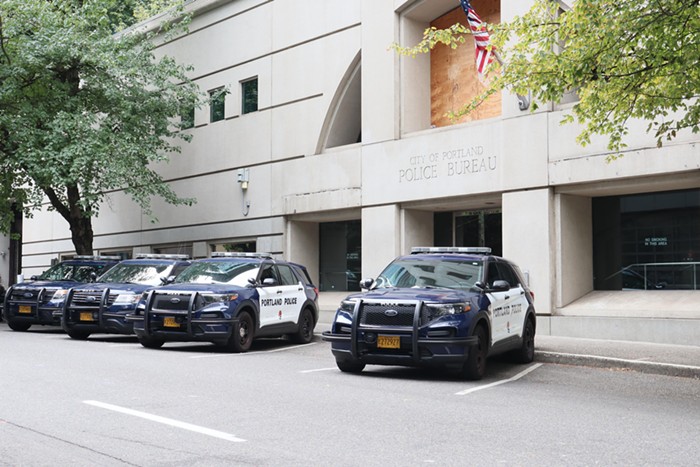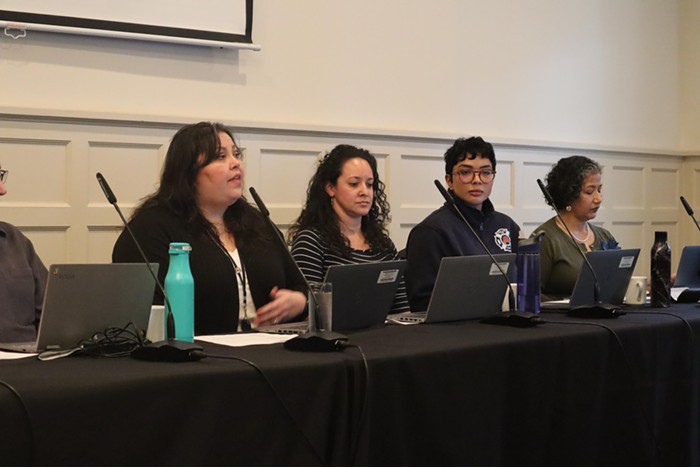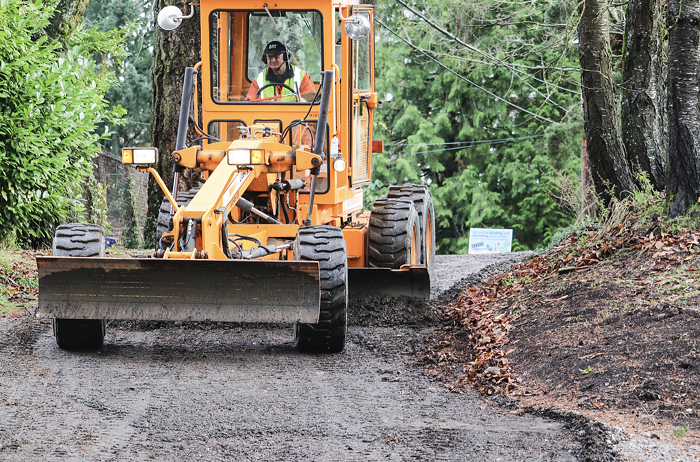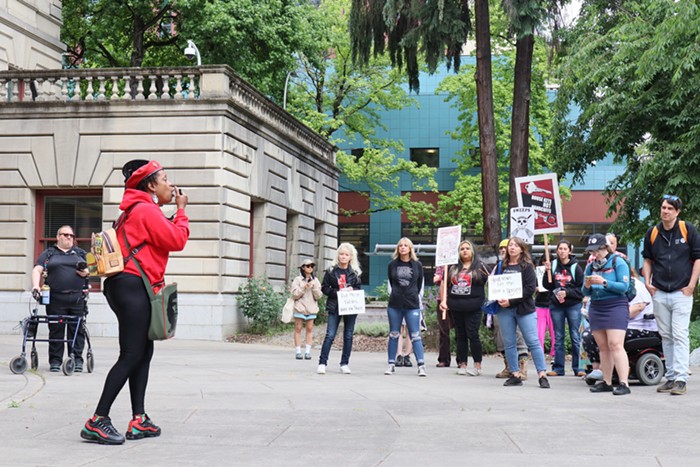
Members of the public weighed in on the county and city’s recent findings that an oil tank farm in Northwest Portland could cause one of the largest oil spills in the world during a public meeting Wednesday.
The draft report of what would happen to the the Critical Energy Infrastructure (CEI) Hub during the Cascadia earthquake—an anticipated 9.0 earthquake caused by the off-shore Cascadia Subduction Zone—was released last week by the Multnomah County Bureau of Sustainability and Portland Bureau of Emergency Management. The report gathered public data about the number of tanks in the hub, what kind of materials they hold, and the quantity of materials, and calculated that nearly 200 million gallons of oil and other toxic materials would spill into the ground and Willamette River during a major earthquake.
The city and county released the report as a draft because they wanted to tap into community knowledge to fill in any gaps in the report. Over 100 community members tuned into the Wednesday evening Zoom call, listening to the report’s authors describe their findings and commenting on lingering questions they want the report to address.
Bob Saligner from the Portland Audubon—a wildlife conservatory—noted that the report should have a detailed catalogue of the wildlife refuges along the Willamette and Columbia Rivers that would be impacted by the oil released from the tanks.
“I’d also add that we are completely unprepared for an oil spill,” said Saligner, adding that they have the most resources in the city to handle wildlife rehabilitation but an oil spill of this magnitude would be outside their capabilities.
Nancy Hiser, a Linnton resident who lives near the tank hub, called for more research on the current impacts the CEI Hub has on air quality in the area, while several other nearby residents asked for more detail on the health impacts they would face from being so close to a major oil spill.
The discussion left officials with at least four areas of the report that require more analysis. According to the county’s Bureau of Sustainability directory John Wasiutynski, those include: how the oil spill would impact the nearby Vigor shipyard and other businesses along the river, what will happen to people who live on houseboats and other floating communities along the Columbia River, specific lists of sensitive wildlife that would be harmed by the oil spill, and the degree to which the groundwater will be impacted by spilled materials.
The research team will add those topics—and any others they identify upon revision—to the final version of the report released this fall. The final report will also include estimates on how much cleaning up the oil spill would cost, as well as input from tribal governments from nations along the Columbia River.
While the public meeting was slated to focus on areas of the report that are missing or need more detail, some of the participants took the time to air their grievances with the city and county. Multiple members of the public expressed concern that the county and city aren’t doing enough work to actually prevent the oil spill.
“This is a really interesting study that got great information, but it's a little disturbing because I'm not sure what the goal here is,” said Barbara Quinn during the public comment section of the meeting. “Is the goal to find methods or ways to address the problem of this slow motion disaster we know is going to happen? Once this disaster happens and once these tanks erupt, or whatever they're going to do during a large earthquake, it's too late. There's no way we can even address that kind of impact.”
Wasiutynski is sympathetic to those concerns, and has them himself.
“It's a really scary scenario, so I think we ought to be able to do something about it,” Wasiutynski said in an interview with the Mercury. “If you have this money to clean up an oil spill, then there should be money to stop an oil spill we know will happen from happening.”
Multnomah County Commissioner Sharon Meieran—one of the local leaders spearheading the CEI report—reiterated during the meeting that establishing a full scope of the danger through the report is the first step in taking preventative measures to reduce the risk of an oil spill. Once the second phase of the report detailing the cost of the oil spill clean up is complete, then the county—and other government partners like the city and state—can start developing policy to require or incentivize prevention.
The current plan is to introduce legislation that would hold the oil companies who store fuel at the CEI Hub responsible for any clean up costs associated with the predicted oil spill. Because the cost of cleaning up such a large oil spill would be a huge blow to the industry, the county and city hope the oil companies would be more inclined to invest in retrofitting their older tanks that are more prone to breaking during an earthquake, thus reducing the overall oil spill risk.
When asked if the threat of financial burden would be enough to incentivize the oil companies to upgrade their tanks, Meieran said the county leaders are guessing that it might be, but ultimately aren’t sure.
“Are we sure it would work? No,” Meieran said. “We would be on the cutting edge of actually [holding oil industries accountable for damages they cause], but it's better than not doing anything.”
County Commissioner Susheela Jayapal, whose district includes the St. Johns neighborhood across the river from the CEI Hub, also underscored that uncertainty. Jayapal said creating policy to lessen the risks of an oil spill will require action from not only county and city leaders, but state and federal representatives as well.
“We do need to examine at every level of government what can be done, because the scope of this is so large that there is probably not a single policy solution—it has to be an array of connected policy solutions,” Jayapal said.
The public can still provide written comments on the draft report until August 15. The final version of the report is expected to be published in October.



















